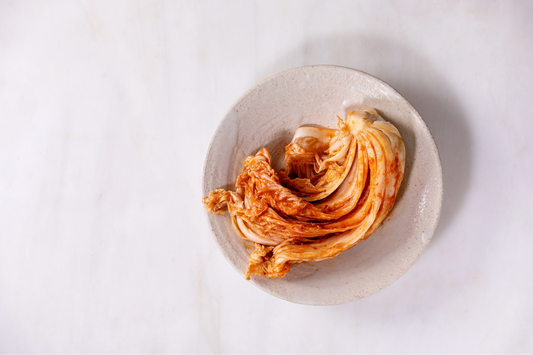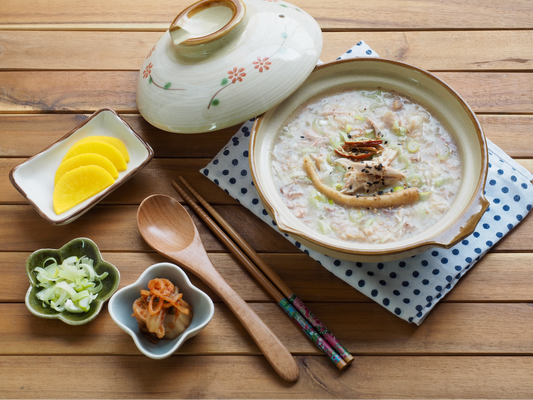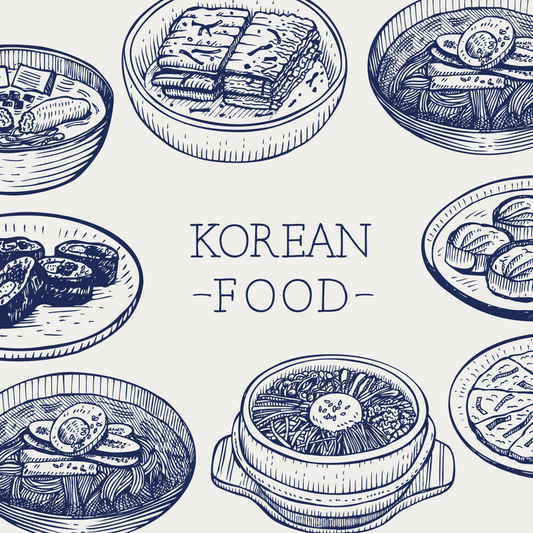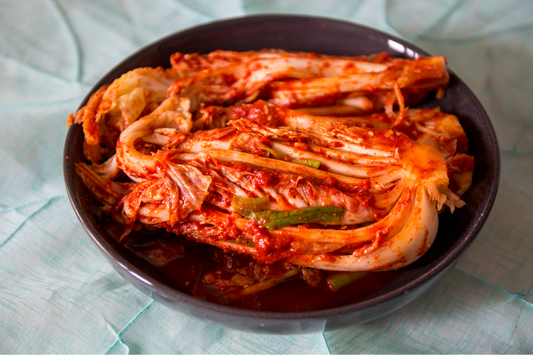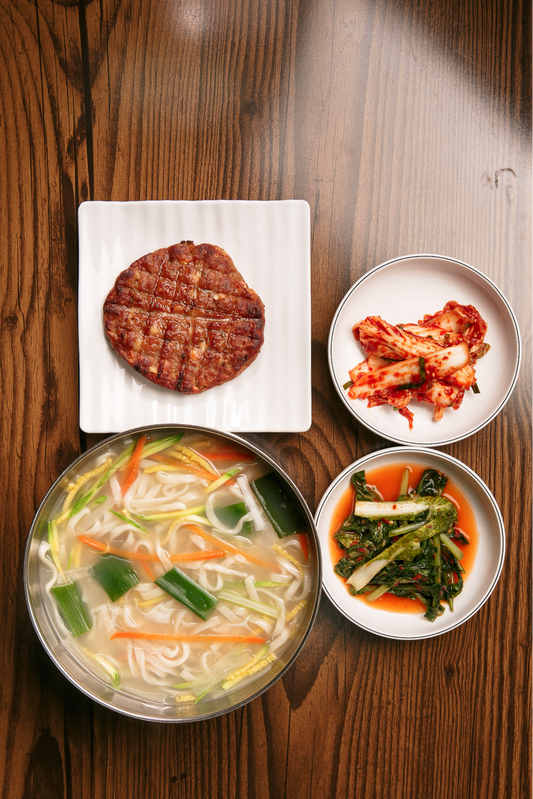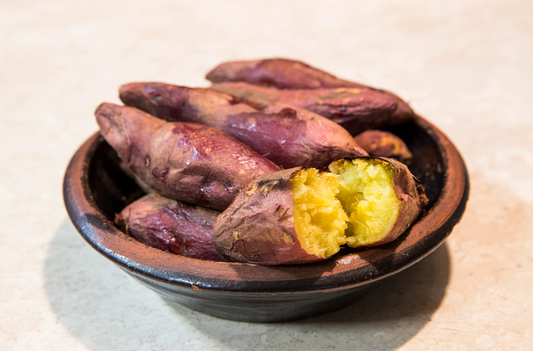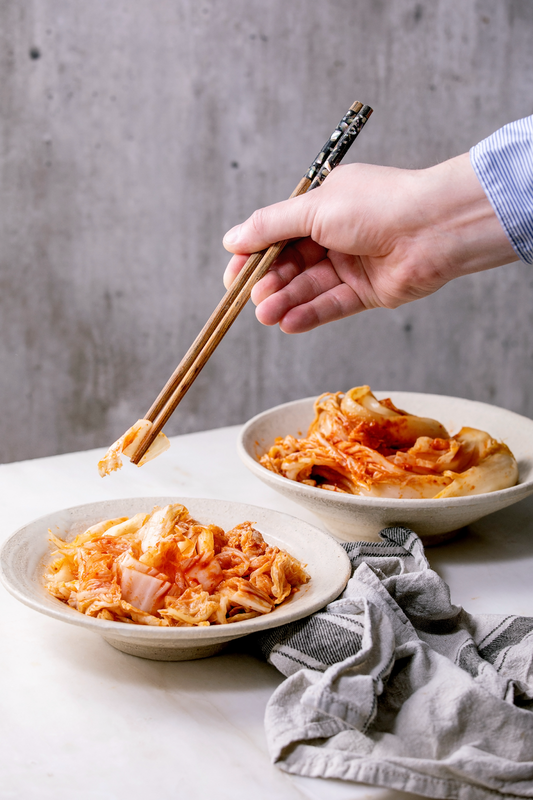Ever wondered why Koreans say "Kimchi!" in photos instead of "Cheese!"? This phrase is a big part of Korean culture. It shows how much kimchi means to them. Saying "Kimchi" while smiling brings out a natural smile and shows their love for kimchi.
Kimchi is a big deal in Korea, enjoyed with almost every meal. With over 300 types, it's a big part of their lives. Saying "Kimchi" in photos is a way to celebrate their food heritage.
The way Koreans say "Kimchi" is key to a great smile. It stretches their lips into a wide, real smile. This simple trick has become a favorite in Korean photos, showing their joy for traditional food.
Key Takeaways:
- Koreans say "Kimchi" instead of "Cheese" when taking photos to create a natural smiling expression.
- Kimchi is a fundamental part of Korean life, with over 300 varieties enjoyed with almost every meal.
- The pronunciation of "Kimchi" stretches the lips into a genuine smile, resulting in happier photographs.
- Saying "Kimchi" during photo sessions reflects the cultural significance and pride Koreans have for their traditional cuisine.
- This unique photo phrase has become a beloved aspect of Korean culture, showcasing the connection between kimchi and everyday life.

Kimchi in Everyday Life in Korea
In South Korea, kimchi is more than a side dish. It's a key part of their food culture and heritage. Koreans eat over two million tonnes of kimchi every year. This shows how much they love it.
There are about 300 types of kimchi, each with its own taste. You can find flavors like garlic, ginger, chili pepper, and fermented shrimp. So, there's kimchi for everyone.
Kimchi is a big part of Korean meals, even breakfast. Many think a meal isn't complete without it. This love for kimchi goes beyond Korea. Korean food fans take kimchi with them when they travel to enjoy it and share their culture.
"Kimchi is not just a food; it's a way of life for Koreans. It brings families together, connects generations, and represents our shared history and traditions." - Park Jae-sung, a kimchi maker from Seoul
Kimchi's importance in Korean culture is huge. There's a museum and even a space journey for it. The kimchi industry in South Korea is booming. In 2023, they exported $155 million worth of kimchi to over 100 countries.
The Korean Wave (Hallyu) has made kimchi famous worldwide. It shows how k-culture can reach far. The Korean government wants to double kimchi exports to $300 million by 2027. They also plan to celebrate 'Kimchi Day' in 15 countries.

Kimchi, Cheese, Smile
People worldwide have found ways to get genuine smiles in photos. In Korea, "Kimchi" is a popular phrase for this. It's used by photographers and everyone else to get that perfect smile. This section looks at how to get a smile in photos, why "Kimchi" works, and how it compares to other countries.
Expressions used to create a smiling face when taking photos.
In many places, photographers use certain words to get smiles. These words help shape the mouth into a smile. In English-speaking countries, "Cheese" is common because it stretches the mouth like a grin.
The reason why people say "kimchi" when taking pictures.
In South Korea, "Kimchi" is the top choice for smiles in photos. Saying "Kimchi" in Korean moves the mouth like "Cheese" in English. This natural smile is loved by Koreans of all ages.
The background of how "kimchi" began to be used during photo sessions.
The start of "Kimchi" in photos isn't well-known. But, it's thought to have started in the late 20th century. Kimchi is a big part of 3, so it's fitting in photos. It's also seen in TV and movies, making it more popular.
Comparison with similar expressions used in other countries.
While "Cheese" and "Kimchi" are well-known, other countries have their own sayings. In Spanish-speaking countries, "Patata" or "Diga whiskey" are used. These show how different cultures approach getting smiles in photos.
The way "Kimchi" affects pronunciation to get a smile is key in Korean culture. As it spreads, it shows how language and culture are important in capturing happy moments.

Pronunciation and Effect of "Kimchi":
Koreans have a special trick for getting the perfect smile in photos. Instead of saying "cheese," they say "kimchi." The way you say "kimchi" is important for getting that smile right.
The smiling effect created by pronouncing the word "kimchi"
The word "kimchi" is said as "kim-chee," with a focus on "chee." This makes your mouth curve up, giving you a big, happy smile. Saying "kimchi" makes your teeth and lips move like a real smile, perfect for photos.
Koreans also use a "V" sign with their fingers when saying "kimchi" for photos. This gesture is a fun addition to the "kimchi" smile in Korean culture.
Comparison with expressions used in other countries to elicit smiles
In Korea, "kimchi" is the top choice for smiles in photos. But other countries have their own sayings. In English-speaking countries, it's "cheese" because of the "chee" sound. In Japan, it's "sei, no" (セーノ), or "say, 'no.'" In China, "qiezi" (茄子), or "eggplant," is popular.
Despite the differences in words and pronunciations, the goal remains the same: to capture genuine, happy smiles in photographs.
The "kimchi cheese smile" is loved in Korea and spreading across Asia. So, when you're in Korea and someone takes your photo, say "kimchi" with a big smile and a "V" sign. It's a fun way to get a great photo.

Kimjang Culture with Rubber Gloves and Large Plastic Basins
Kimjang is a big part of Korean culture. It's about making kimchi, a dish full of salted and fermented veggies, like napa cabbage. This hard work takes over two hours for a family to do, but it's worth it. Kimchi is full of good stuff like probiotics and vitamins.
Two key tools are used in kimjang: large plastic basins and rubber gloves. The basins are big enough for mixing all the ingredients well. The gloves keep hands safe from the spicy stuff and the smell of red pepper flakes.
"Kimjang is not just about making kimchi; it's a celebration of our heritage, our connection with nature, and the bonds we share with our loved ones."
The best time for kimjang depends on the napa cabbage harvest. The kimchi base sauce includes scallions, green onions, and Korean red pepper powder. It also has garlic, ginger, fermented shrimp or anchovy sauce, and onions. Using local ingredients makes the flavor real and shows the connection to the land.
Kimjang is a year-round effort. It shows Korean family values and how they live in harmony with nature. Families come together, wearing rubber gloves, to make kimchi. They bond and share their cultural heritage with the next generation.
Introduction to Kimjang Culture
Kimjang is a special tradition in Korean culture where people make kimchi together. It happens in late autumn or early winter. During this time, families and neighbors come together to make lots of kimchi for the winter.
This tradition is not just about food preservation. It's also a time to strengthen family and community bonds. It's a social event that brings people closer.

What is Kimjang?
Kimjang is the traditional way of making kimchi, a key dish in Korean food. People come together to make different kinds of kimchi, like baechu and kkakdugi. They salt the veggies, mix the seasoning, and stuff the veggies before fermenting them.
This process takes 2-3 weeks. During this time, the kimchi develops its unique taste.
"Kimjang is a beautiful tradition that brings people together and celebrates the rich history and culture of Korea." - Chef Hooni Kim
The Origin and History of Kimjang
Kimjang has a long history, dating back centuries. It started as a way to preserve veggies during winter when fresh food was hard to find. Over time, it became a cultural tradition that shows the Korean way of life.
In 2013, kimjang was recognized by UNESCO as an Intangible Cultural Heritage. This shows its importance in Korean culture. Kimchi itself has a history of thousands of years, with records of it in Korea for centuries.
As Korea grew economically from the 1960s, kimchi became known worldwide as a healthy food. The Codex Alimentarius Commission set a global standard for kimchi in 2001. Today, Korea has over 200 kimchi types, each with its own taste and region.
The preparation process of Kimjang.
Kimjang is a traditional Korean way of making kimchi. It's a hard but rewarding task that brings people together. Families and communities work together to pick the best ingredients.
They choose napa cabbage, red pepper powder, garlic, ginger, and fish sauce. These ingredients are key to making kimchi's unique flavor.
The kimjang date is picked based on the weather and ingredient maturity. It usually happens in late autumn or early winter. This time ensures the best flavor and fermentation conditions.

Preparing Ingredients: Napa cabbage, red pepper powder, garlic, etc.
When the kimjang date is set, the ingredient preparation starts. Napa cabbage is salted to remove water and then rinsed well. This step is important for the right texture and taste.
Other ingredients like red pepper powder, garlic, ginger, and fish sauce are mixed. They create the spicy seasoning paste that makes kimchi special.
A typical kimjang recipe makes 10-12 servings. The whole process can take up to 2 days. It shows the dedication and effort in this tradition.
Setting the Date for Kimjang: The importance of weather and timing
The kimjang date is not random. It's chosen based on weather and ingredient freshness. Cool autumn and winter temperatures are perfect for fermentation.
The timing is also key. It makes sure the napa cabbage and other ingredients are at their best.
In recent years, fewer Korean families are doing kimjang. A 2012 survey showed only 52% of households planned to make kimchi. But, kimjang's cultural importance is still strong. It was recognized as a UNESCO Intangible Cultural Heritage in 2013.

Tradition and Procedures of Kimjang
The kimjang tradition is a cherished practice in Korean culture. It involves making kimchi, a key part of Korean food. Families come together to salt, season, and stuff cabbage leaves. This tradition has been passed down for generations, even with modern refrigeration.
The meaning behind using large plastic basins and rubber gloves
Large plastic basins are key in making kimchi. They help salt and rinse the cabbage. This ensures the cabbage is ready for the seasoning paste.
Rubber gloves protect hands from spicy ingredients. These include red chili pepper powder, garlic, and ginger. They also prevent hands from getting stained.
The Kimjang making process: salting, seasoning, and stuffing the cabbage
The kimjang salting starts with cutting baechu cabbages into quarters. They are soaked in salty water. Then, they dry in the sun to remove excess moisture.
After drying, the seasoning and stuffing begin. The kimchi marinade is made with red chili pepper powder, garlic, and more. The salted cabbage leaves are stuffed with this paste.
The stuffed cabbage is packed tightly into containers. This allows the kimchi to ferment and gain its flavor.
The kimjang tradition is more than just food preservation. It celebrates Korean cultural heritage. Recognized by UNESCO as an Intangible Cultural Heritage, it highlights the importance of preserving this tradition for the future.

Cultural Importance of Kimjang
Kimjang is a special time in Korean culture. It's not just about making kimchi; it's a tradition that unites people. Kimchi is a key part of Korean meals, showing its deep cultural value.
In 2013, kimjang was added to the UNESCO Intangible Cultural Heritage list. This honor shows its importance in Korean society. It's seen as vital as the Korean language and flag.
Kimchi and Korean Life: How kimchi is intertwined with daily life
Kimchi is more than a food trend in Korea; it's a cornerstone of Korean cuisine. It's a common side dish in every meal. Its popularity in America has grown, thanks to its health benefits.
Kimchi is known for improving digestion and boosting immunity. It's also believed to prevent aging and lower cancer risks.
Kimjang as UNESCO Intangible Cultural Heritage
Kimjang's recognition as UNESCO Intangible Cultural Heritage in 2013 highlights its cultural importance. It happens from late fall to winter, the best time for making kimchi. Communities come together to make and share kimchi, ensuring everyone has enough for winter.
Even with modern changes, families still cherish their traditional kimchi recipes. They value the social bonds formed during kimjang.
FAQ
Why do Koreans say "Kimchi" instead of "Cheese" when taking photos?
Koreans say "Kimchi" instead of "Cheese" because it makes them smile. It's like saying "Cheese" in English. This fun tradition is part of Korean culture and often includes a "V" sign.
How important is kimchi in Korean daily life?
Kimchi is a big part of Korean food and is eaten with almost every meal. There are over 300 kinds of kimchi. It's not just food; it's a big part of Korean culture and tradition.
Many Koreans think kimchi is good for their health. They believe it boosts their immune system and makes their skin glow.
What is the proper way to pronounce "Kimchi" for a photo?
To say "Kimchi" right for a photo, say "chi" like "chee". Then, make a "V" sign with your thumb and forefinger. Even though the "V" sign and saying "Kimchi" aren't directly connected, Koreans often do both when taking pictures.
What is Kimjang, and why is it important in Korean culture?
Kimjang is when Koreans make kimchi together, usually in late autumn or early winter. It's a time for families and neighbors to come together. They make lots of kimchi to last through winter.
Kimjang is more than just making kimchi. It's a way to bring families and communities closer together.
What tools are commonly used during the Kimjang process?
During Kimjang, people use big plastic basins to salt and rinse cabbage. They also mix the cabbage with seasoning paste in these basins. Rubber gloves are used to protect hands from the spicy ingredients and to avoid stains.
What is the significance of Kimjang being recognized by UNESCO?
In 2013, UNESCO recognized Kimjang as an important part of Korean culture. This recognition shows how valuable Kimjang is in promoting unity and identity. It's a way to keep this tradition alive for future generations.


